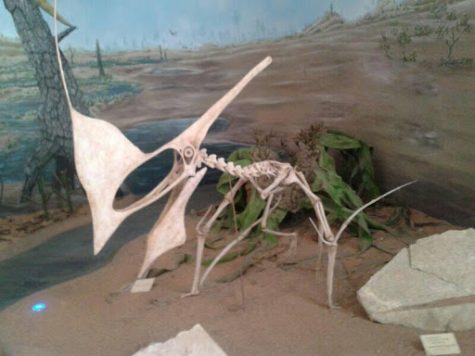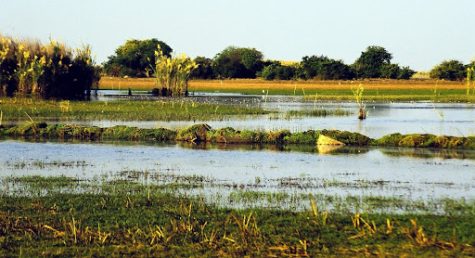Mysteries, Oddities, and Everything Strange: Kongamato
February 6, 2022
Kongamato: The Living Dinosaur
65 million years ago, a giant asteroid collided with the Earth, generating an irrevocably deadly explosion that killed nearly all living creatures. The most significant animals wiped out due to this mass extinction were the dinosaurs, gigantic ancient reptiles that dominated Pangaea. Stegosauruses, triceratops, tyrannosaurus rexes, and countless other creatures dominated the land—that is, until their reign was cut short. Despite most evidence supporting the extinction of these ancient creatures, some people hold the unwavering belief that  these beasts still roam the Earth. Whether they’re hidden in plain sight or exist under the surface of the Earth, the theories supporting the continuation of dinosaurs are plentiful. One such example is the urban legend of the Kongamato, a supposed flying creature that has earned the moniker of one of the last living dinosaurs. But is the Kongamato really a living reptile from 65 million years ago, or is it just a nighttime bird twisted into the ranks of legend?
these beasts still roam the Earth. Whether they’re hidden in plain sight or exist under the surface of the Earth, the theories supporting the continuation of dinosaurs are plentiful. One such example is the urban legend of the Kongamato, a supposed flying creature that has earned the moniker of one of the last living dinosaurs. But is the Kongamato really a living reptile from 65 million years ago, or is it just a nighttime bird twisted into the ranks of legend?
Rumored to be related to the Ahool of Java Island in Indonesia, the Kongamato has been known to live in eastern central Africa. Eyewitness accounts mark it as a lizard-like reddish creature with giant wings, a long beak, and a significant lack of feathers or other features that would distinguish it as a modern avian creature. All those who have seen it agree that it appears to be most similar to images of a pterodactyl. The legend of the Kongamato mostly centers around tribes in northwestern Zambia and Democratic Republic of the Congo known as the Kaonde. The word “kongamato” itself closely means “over-turner of boats” due to the rumors of it performing such activities and swooping in to feast on the unsuspecting tribesmen. 
The Kongamato first became widely known when it was described by Frank Welland in his 1932 book In Witchbound Africa. Welland details his interactions with the local tribespeople and their consistent descriptions of the creature, all matching each other. The Koande people were frightened of the creature to no end, and Welland made note of their terror in his book. He also exhibited the tribe’s beliefs: they did not think the creature to be supernatural, but rather an ethereal and completely natural force. Over two decades later, in 1958, Maurice Burton visited indigenous people in central Africa and listened to their accounts with the supposed dinosaur, living in a nearby swamp and supposedly being caught off the coast by a handful of fishermen. A. Blaney Percival detailed his experience with the Kitui Wakamba people who claimed to see a dinosaur-like creature swooping over their homes in the middle of the night and Dr. J. L. B. Smith authored a book about suspicious creatures encircling Mt. Kilimanjaro like hawks.
The most notable story of a witness to Kongamato comes from a 1956 experience by engineer J. P. F. Brown. He was filling up his water at Lake Bangweulu when something with leathery wings, a long mouth, and a three-and-a-half foot wingspan flew above his head. Almost a year later, someone in the same area reported an attack by a pterodactyl-like creature that led to hospitalization. People in western Cameroon have detailed  a bat-like creature known as the Olitau, and an expedition was led by Ivan Sanderson (who also did work on the Ahool) to discover it. Captain Charles R. S. Pitman detailed a strange beast in his observations of Uganda who “haunted” the swamps. Reports continue into modern time, when in 1998 Kenyan exchange student Steve Romandi-Menya noted that Kongamato would feast on decomposing bodies not buried deep enough.
a bat-like creature known as the Olitau, and an expedition was led by Ivan Sanderson (who also did work on the Ahool) to discover it. Captain Charles R. S. Pitman detailed a strange beast in his observations of Uganda who “haunted” the swamps. Reports continue into modern time, when in 1998 Kenyan exchange student Steve Romandi-Menya noted that Kongamato would feast on decomposing bodies not buried deep enough.
The African people who bore witness to the supposed Kongamato attest to its horrific nature. Its leathery skin and long beak would only point to it being some sort of descendant of the creatures that used to walk the Earth. Even despite the legends, the hope of an ancient dinosaur still wandering the dirt we stand on today is more than likely a hapless idea. Even if some of the dinosaurs were preserved by the legendary meteor impact, the plausibility of dinosaurs existing as we imagine is slim to none. After all, dinosaurs had flesh and bones and everything that ages. The modern images of dinosaurs we have are fallacies, not accounting for skin, organs, and any other necessary components for life. Who knows, we could’ve had 20 foot chickens wandering the Earth! Even with the hilarity of that image, the legacy of the Kongamato right remain forever unsolved as something continues to terrorize the native African people.
Resources:
https://www.genesispark.com/exhibits/evidence/cryptozoological/pterosaurs/kongamato/
https://face2faceafrica.com/article/kongamato-the-real-batmen-of-east-africa
https://www.recountandreveal.com/blog/2021/2/9/314m2630m5lz4xh2z0d51jq2z7g1hd






















































